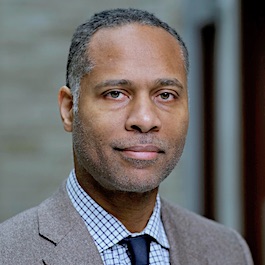Guillermo Ameer, Bioresorbable Surgical Devices

Imagine if your body could jump-start the regeneration of diseased, injured, or missing tissue?
Daniel Hale Williams Professor Guillermo Ameer, DSc, works to apply regenerative engineering and nanotechnology to organ and tissue regeneration and wound healing.
His bioengineering efforts specifically aim to design biomaterials that leverage, stem cells, and specialized proteins, unlocking their innate potential to heal the human body. Ameer focuses on surgical outcomes as the primary application of his work, whether through organ transplants, tissue repair, or surgical reconstruction.
With appointments in both biomedical engineering and surgery, Ameer has more than 55 issued or pending patents in nine countries, mostly focused on his work in the aforementioned areas. While his innovations have centered on restoring normal function in injured or diseased tissue, more recent advances in stem cell and molecular biology, as well as materials science, are providing fuel to achieve significant progress in tissue and organ reconstruction.
One of Ameer’s inventions reached the tremendous milestone of receiving FDA clearance for marketing in October 2020. His biomaterial, CITREGENTM, is a synthetic resorbable biomaterial, used to create an orthopedic screw system to help attach and stabilize soft tissue grafts to surrounding tissue and to increase its ability to regenerate back into its original form.
“The CITREGEN material is based on an unprecedented and innovative bioresorbable biomaterial technology developed to support the body’s normal healing processes and promote tissue regeneration,” Ameer said. “When used to fabricate devices for the reconstruction of tissues such as ligaments, blood vessels, bladder and bone, results have been impressive and beyond expectations.”
Acuitive Technologies, Inc., a sublicensee of Ameer’s startup VesselTek Biomedical, plans to commercialize the CITRELOCKTM System in early 2021 alongside an orthopedic distribution partner. Researchers from The Pennsylvania State University, led by CITREGEN co-inventor and former Ameer postdoctoral trainee Jian Yang, PhD, who leads that school’s Transformative Biomaterials and Biotechnology lab, also have worked on advancing this technology for use in various other medical applications.
At Northwestern, Ameer also serves as director of the Center for Advanced Regenerative Engineering (CARE), based at McCormick School of Engineering and Applied Sciences, which has built a collaborative, cross-sector clinical ecosystem since its inception in 2018. It has established connections with multiple medical centers in the region, including Feinberg School of Medicine, University of Chicago Pritzker School of Medicine, The University of Illinois at Chicago, the Ann and Robert H. Lurie Children’s Hospital of Chicago, Indiana University School of Medicine, The University of Wisconsin School of Medicine and Public Health, and the Cleveland Clinic.
The Center has raised more than $11 million from the National Institutes of Health, National Science Foundation, Department of Defense, and private foundations, bringing together more than 40 scientists and researchers across a variety of disciplines—materials science, chemistry, biology, surgery, and biomedical, mechanical, civil and environmental engineering—who likely never would have otherwise interacted with each other, which has resulted in new research, training, and Center grant proposals to the federal government.
Many projects have focused on wound healing, cell transplantation, and smart regenerative systems that can sense the microenvironment in an organ or tissue and relay that information to the patient, caregiver, doctor, or manufacturer. Overall, the Center boasts more than a dozen issued and pending patents.
“It’s truly a cross-institutional effort with a goal of creating tools that will improve the outcomes of surgeries,” Ameer said. “No matter how many advances there are in the pharmaceutical market, it will not be sufficient if an organ transplant is required or diseased tissue is involved. Our center hopes to innovate new tools for surgeons to use to provide better outcomes for patients.”